"He panehe toki, ka tu te tangitangi kai".
A little stone adze will fell large trees. Ultimately the cleared land will produce quantities of food.
(Reed's Maori Proverbs).
Scotsman's Valley was earlier known as Whyte's Valley after J. B. Whyte who bought 7163 acres for One pound per acre in October 1876. This land was in Scotsman's Valley and the Tahuroa Road area, being part Tahuroa number one plus Tahuroa 3 and 4 blocks.
In 1879 Thomas Russell and the Shaw family, all of Wairoa South, took an option on 2127 acres in Scotsman's Valley, on both sides of the road from the confiscation line up to and including blocks where K. Hoult and W. Silvester now live. At the same time Thomas Paton bought the block where A. Silvester lives. The Shaws and Russell did not take up all the option. Russell bought Doug Hoult's block.
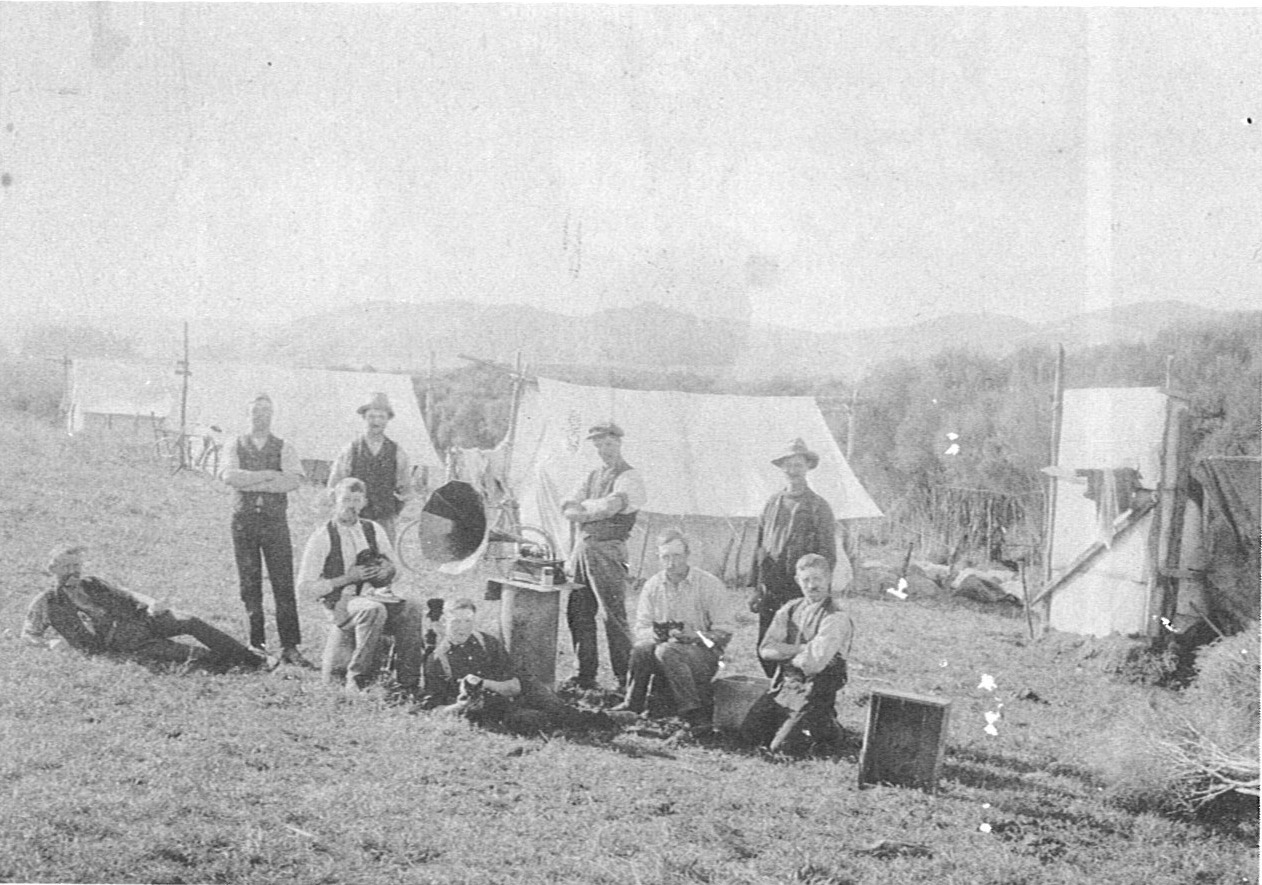
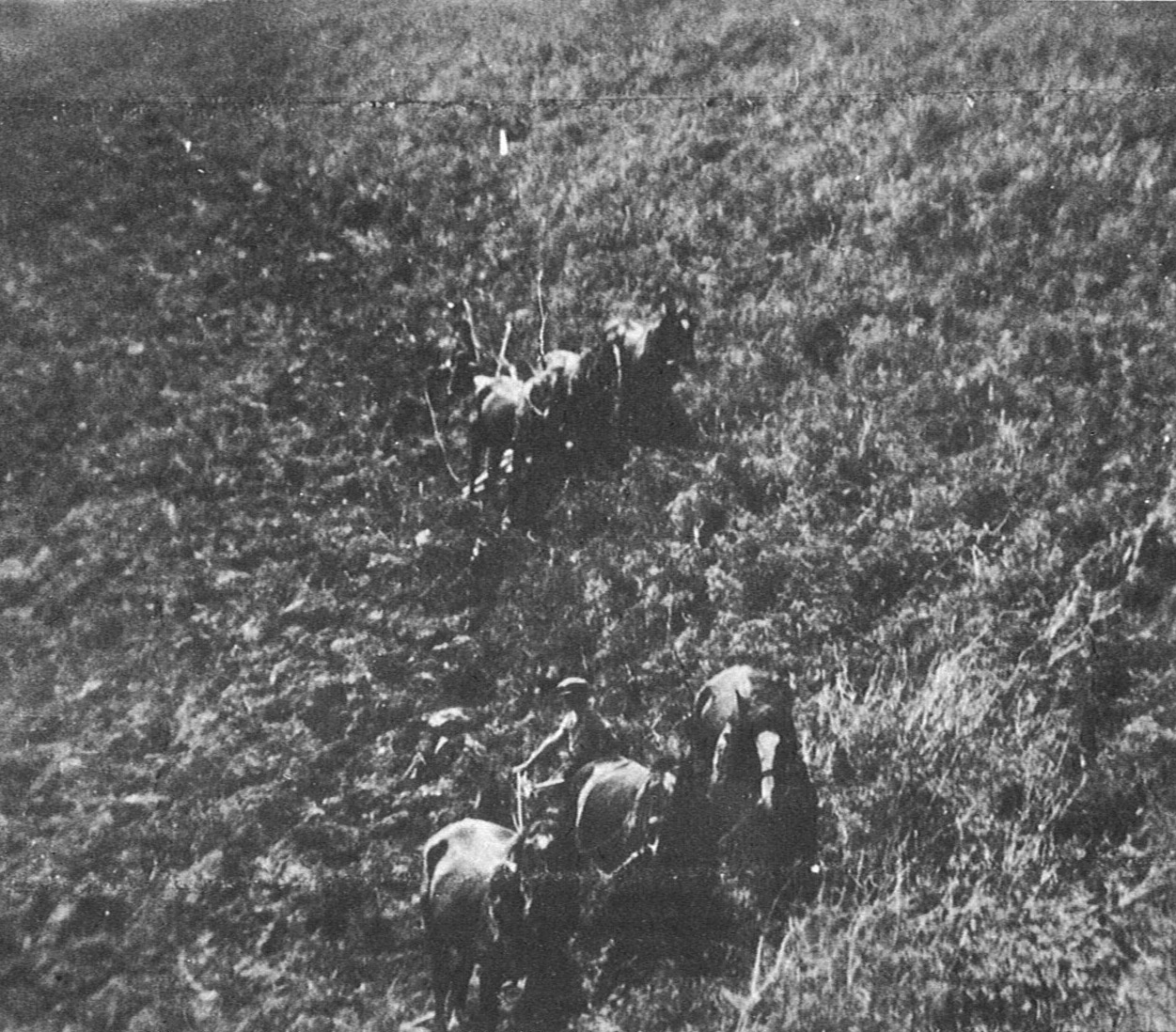

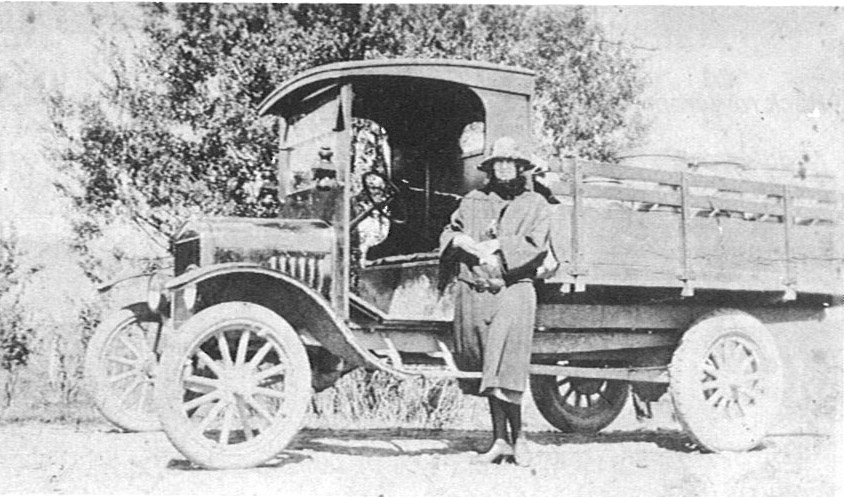
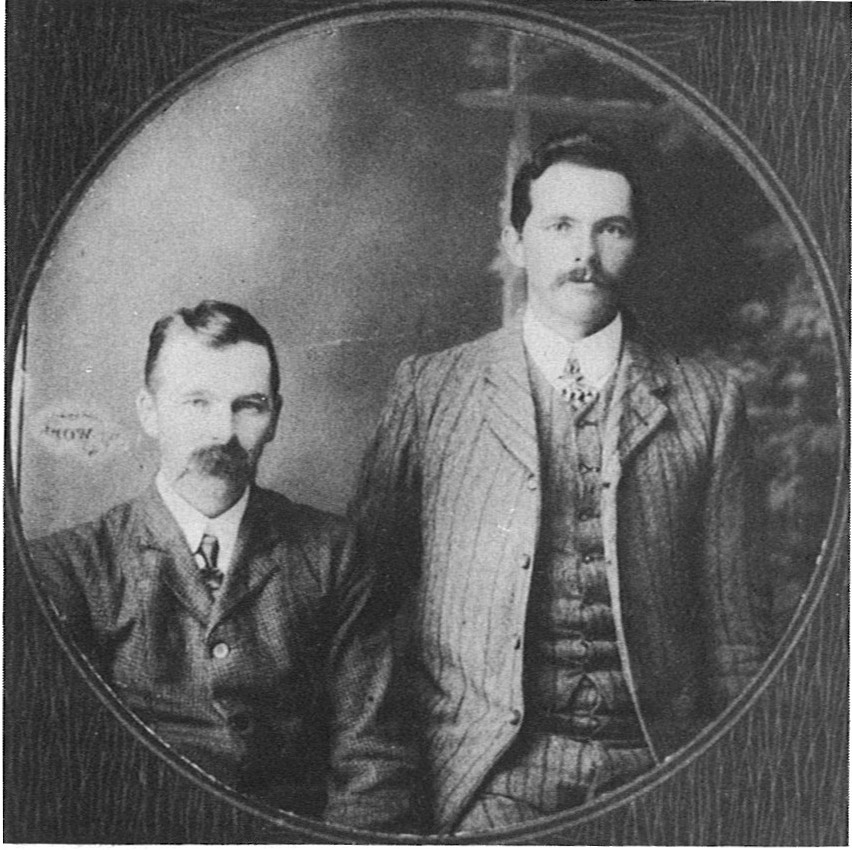
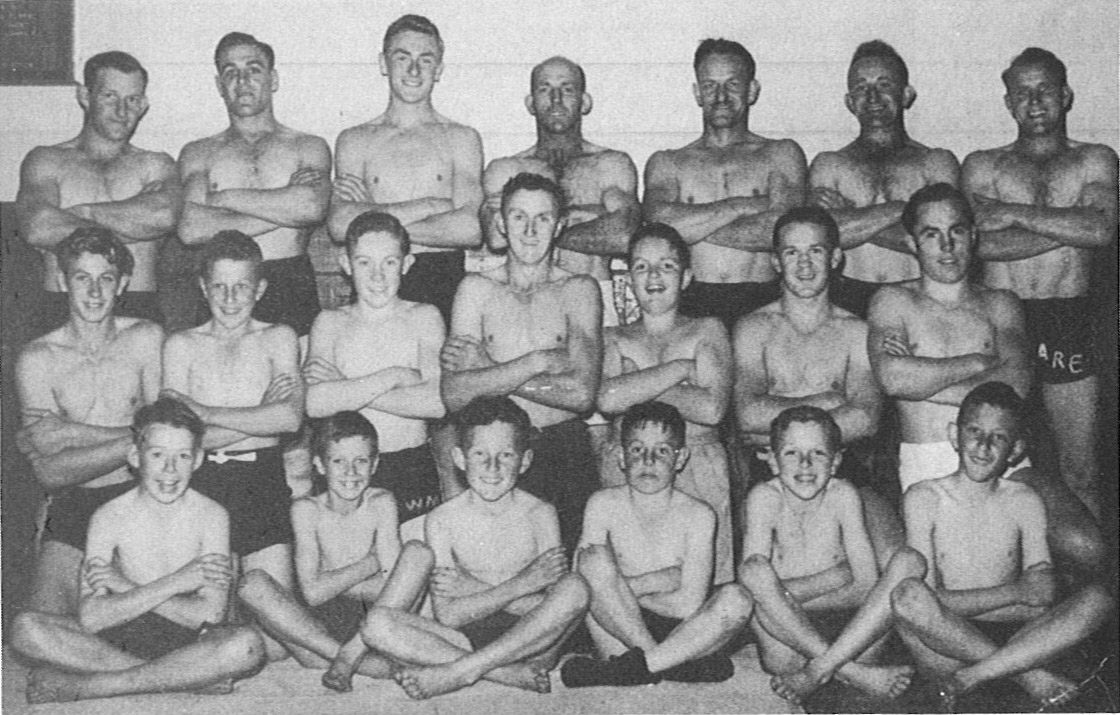
Back row from left: F. Lye, V. Walters, Vic Pope, A. Newton (coach), Alex Lye, Len Lye, P. McKenzie.
Middle: Jack Pope, N. Lawrence, N. Haynes, S. Pope, B. Pardy, Haynes, R. Forbes.
Front: Jim Richardson, Noel Pope, Ian Spencer, N. Skinner, G. Lawrence, Oliver Lawrence.
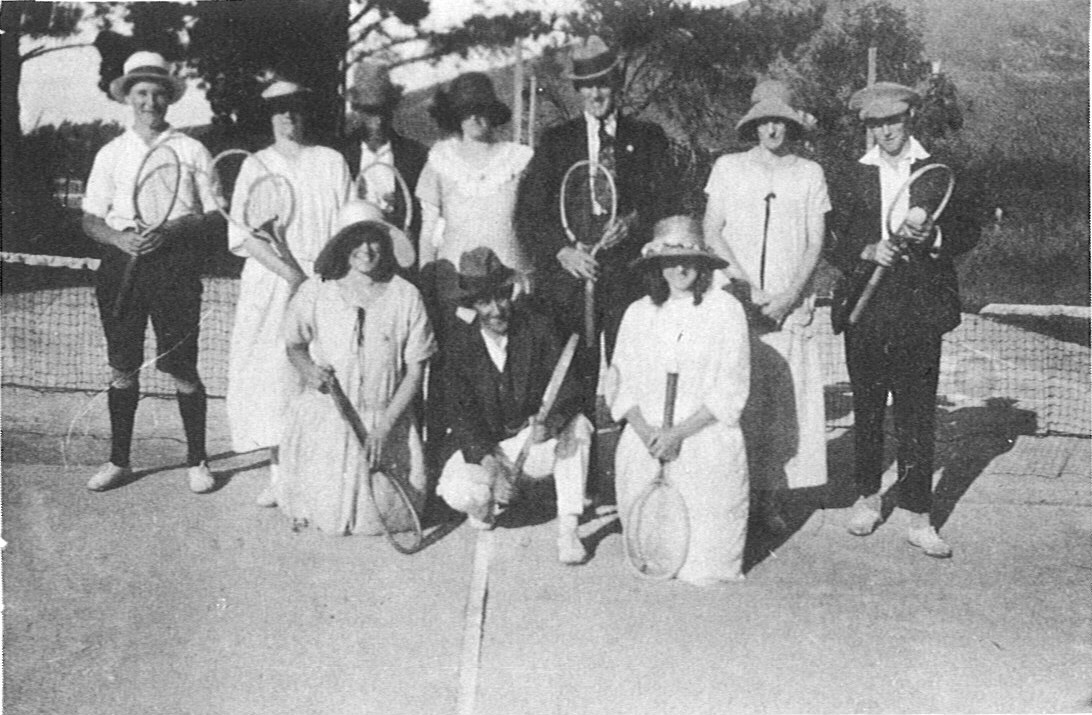
Back from left: -, Mrs Loveridge, David Shaw, -, Wally Pope (captain), Ethel Shaw, Laurie Laird.
Front: Helen Curie, Rev. Wilson (Presbyterian Minister), Muriel Ramsay.
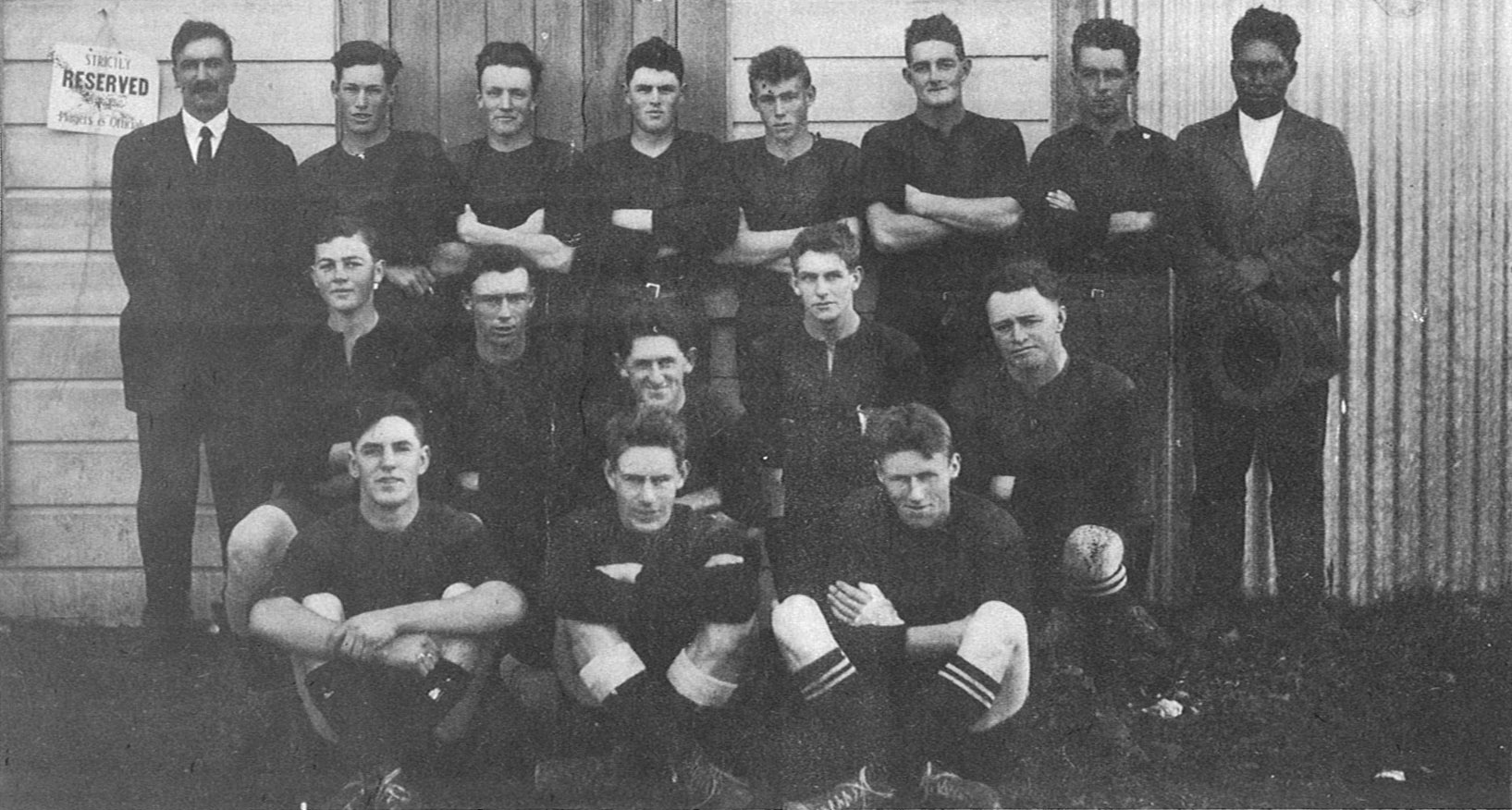
From left back row: Mr Windsor (Manager), H.Ferguson, W. Curie, G. Jeffries, F. Shaw, D. Fell, L. Singleton, J. Kapea.
Middle row: B. Inman, D. Shaw, M. Casey, A. Pope, D. Moon.
Front row: H. Shaw, R. Shaw, T. Shaw.
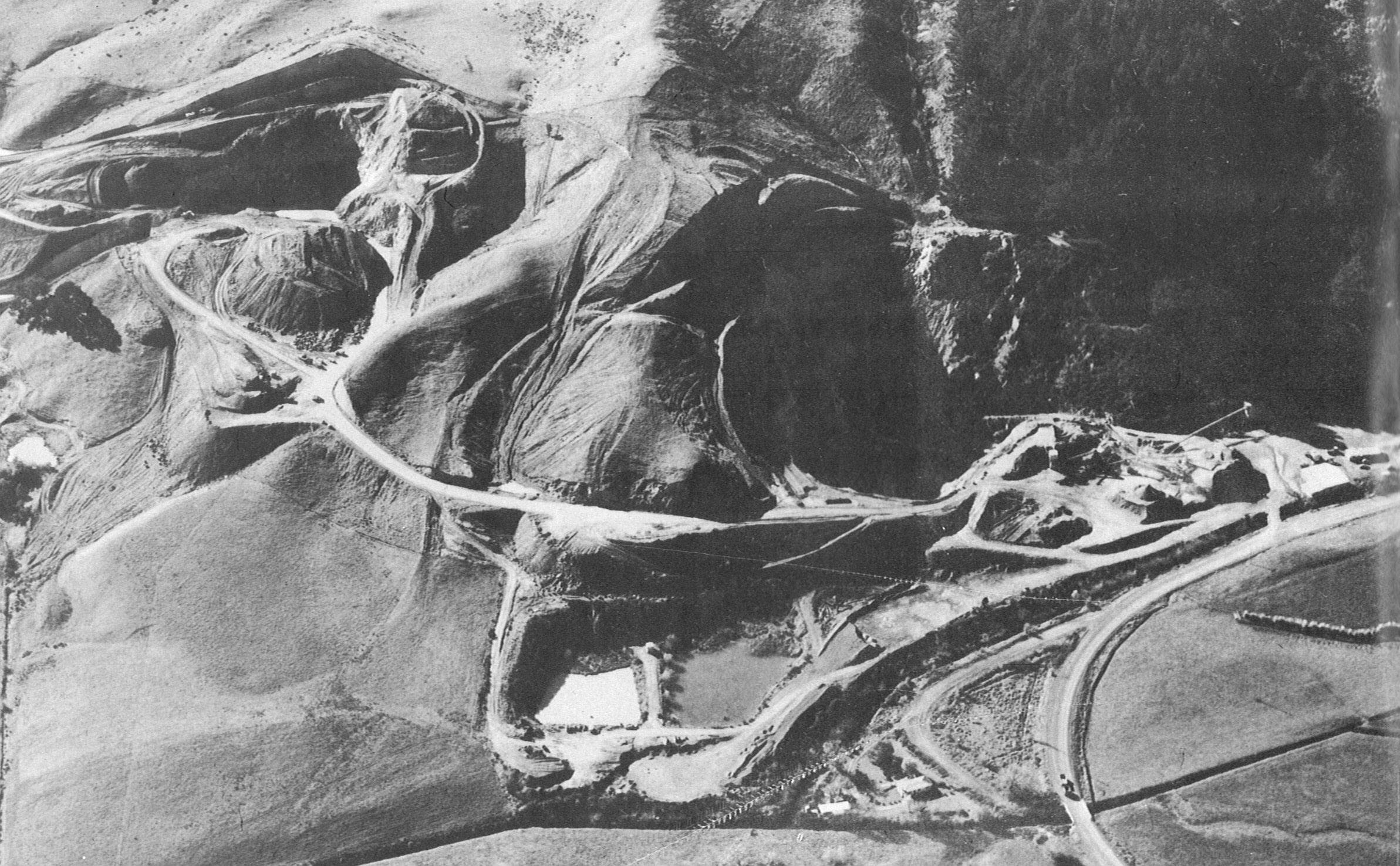


On the 21st April 1880 Whyte sold 350 acres of unimproved land in the valley, just east of the confiscation line, to James Shaw for Six hundred pounds. On the same day a further 587 acres were sold to David Shaw senior for his youngest sons Charles and Thomas. James, Charles and Thomas Shaw were sons of David and Janet Shaw who had left their birthplace, Muirkirk Scotland, and arrived in Auckland on the 4th April 1865 aboard the Viola. A new settlement was being established in what was then called Wairoa South (now Clevedon) and the family settled there. David and his two oldest sons, James and David junior, contracted to fell bush and dig drains. In 1867 they joined the search for gold at Thames and made a little money.
James then worked for the Waikato Land Association as a contractor, and at times for the Tamahere Road Board. He decided to farm on his own account. Probably he had heard of the plans for the settlement of Tauwhare, and the promise of a dairy factory.
James was about 38 years of age when he began farming his land, and a year later he was joined by his young brothers Charles and Thomas. The combined Shaw holdings of 937 acres extended from the Confiscation Line, i.e. Pukemoremore Road, in the west, to the Hoult and Ranstead boundaries in the east. James Shaw and his wife lived in a small shingle roofed cottage which was completely destroyed by fire in January 1890. It was thought that sparks from the fire had ignited the shingles.
David and Janet Shaw, although in their sixties decided to leave Clevedon and live in the valley near their sons. David Shaw died in 1887 aged 67. "Granny Shaw" loved the valley, which reminded her of her native "Hielands" in Scotland. Although Scotsman's Valley became the accepted name, the bridge near the lower end of the valley was for years known as Whyte's Bridge. From 1905-12, W.l. Conradi was Clerk to the Tamahere Road Board and he always wrote "Scotia Valley", but it has long since reverted to its present name.
At the time of the sub-division, the land was covered in fern and manuka, except for rough pasturage along the creek and foot track which generations of Maoris had created on their travels between Waharoa, Tauwhare and Tamahere. A survey dated 1879 shows a road plan roughly parallel with the stream, at the lower end of the valley.
The tendency of the low-lying flats to flood easily, remained for many years. Only in the last five years has the Eureka Drainage Board been able to deepen the Waitakaruru Stream sufficiently, to enable the water to flow away quickly. Seldom does the water now lie longer than a day.
In the decade prior to World War One the south side of the valley was used as an artillery range. Messrs D. Hoult and I. Davison have unearthed shell fragments at the rear of their properties, and the writer unearthed a fuse, for a 4.5 inch howitzer on his property while digging a drain alongside Pukemoremore Road in 1983. Life in the valley in the 1900's obviously had some exciting moments to offset the daily grind. The targets were sited at the rear of Charles and Thomas Shaw's farm on land now owned by C. Boyle. Mr Alex Shaw (son of Charles) remembers the artillery unit being camped on land now owned by L. Verner, about 1914-15. Charles Shaw was a patriotic citizen, and besides assisting artillery units he also grazed horses owned by men who were serving overseas in World War One. He died in 1921, aged 63 years.
In May 1922 the block was resurveyed, the surviving bachelor brother Thomas taking 241 acres at the southern end, with access to Scotsman's Valley being surveyed at the same time (now Hugh Davison's Drive). Incidentally the 1922 survey, using more accurate methods, resulted in the total area being 598 acres instead of the 587 of the 1880 survey. Thomas died in 1943, aged 82. The Shaw land has now been cut up into many smaller blocks.
The development ofthe upper valley was slow. In 1879 Whyte sold 506 acres to Thomas Paton, who later must have bought more, because in 1895 he sold 700 acres to Eyre. Tillotson bought 391 acres at Three pounds per acre from Whyte in 1880. This is now K. Hoult's. Other names associated with the valley prior to 1900 were Russell who had T. D. M. Hoult's block, Richardson, Walworth and Graham. After the turn of the century the new owners were still clearing the land and some blocks have changed hands several times. Bridgman sold to Steele and Harbutt, to Alex Ramsay, to Webb Brothers toT. D. M. Hoult. Guest sold to Holden, to Hunt, Clark to K. Hoult. Thrupp sold to Sanders, to Skinner, to Hetherington, to Ranstead; Thomson to Southon to Badger; Bellamy to Playle to Silvester Brothers; Andrew Ramsay to Stewart to Southcombe to Kennedy; McInnes to Geddes to Stringfield. Goodare land was part of Te Miro soldiers settlement.
Lying across the entrance to the valley just west of the Confiscation Line is the 189 acre property now owned by Mr and Mrs M. O'Connor. It was included in the Tamahere Native Reserve and was granted to Hemi Mohi, Hopa Ngapari and six others, by the Crown, on the 9th June 1880. It remained in Maori ownership until 23rd September 1915 when it was bought by J. H. Hume of Hamilton. Mrs I. K. Storey bought it in 1917 and sold to William Stanley Goosman, farmer of Tamahere, in February 1924. About 60 acres of the rolling land nearest the road were in grass then, and the new owner developed the rest, aided in the draining of the lower swamp area by Philip Te Kata and others. Goosman sold to K. E. Lawrence in 1936. Silvester brothers bought it in 1964 and sold to O'Connors in 1979, when they moved further up the valley.
W. S. Goosman later owned other farm property in Piako and built up a large carrying and contracting business. He became the National Member of Parliament for Piako in 1938 and served for many years, as a Member, and as Minister of Works in the Holland Government. He was later Knighted. He had a great interest in racehorses and was a successful owner.
Reminiscences of Mr Alec Shaw
Mr Alec Shaw, now 74 and living in Matamata, was the sixth of eleven children born to Charles Shaw and his wife Mary. Alec's father and his Uncle Thomas came to live in Scotsman's Valley in 1881. The brothers farmed in partnership until Charles died in 1921. Charles did not favour dairying, and this fact, plus his skill with horses meant that any surplus income from sheep farming and horse breeding went towards the development of the scrub covered hills and the swampy flats. After Charles death, the property was sub-divided, Thomas the bachelor taking the rear 241 acres. He later began dairying on it.
Alec Shaw remembers the hordes of rabbits that lived in the valley in his young days. He and George and Arthur Bellamy used to shoot dozens at a time. Bellamy senior, farmed across the road and up the valley where Silvester Brothers are now.
About 1910 Alec's father imported two parrels of trout ova from his native Scotland, and liberated them in a pool in the creek opposite Pizzini's house. However, eels would have eaten them before they became established.
Charles Shaw used to exercise his horses along Hill Road in the days when it was a clay track. One horse he bred, "Scots Guard", sold in Australia for Eight hundred pounds, a high price in those days. Another horse he raced, "Red McGregor", won the Great Northern Steeplechase. As well as these two horses, an outstanding mare "Jean" had a big influence on his stud, leaving 15 foals. Charles also bred Clydesdale Draught horses. Another racehorse he owned was Loch Abbey.
Reminiscences of Mrs V. E. Goodare
Mrs V. E. Goodare arrived in Tauwhare in 1919, expecting her first child. Her husband Walter's parents were sharemilking for Mr Andy Ramsay junior at the time. Because they had the influenza which caused so many deaths just after World War One, and because the young couple's house was not ready, she spent the first few weeks of her life in Tauwhare at the Accommodation House. Mr Ramsay farmed where Mr Alan Bullick is now and he later sold this farm to Mr Vere Chitty and bought the property which Mr M. Kennedy farms today. He thus became the neighbour across the road from the Goodares. A small area at the bottom of Ramsay's was grassed, but that apart, both properties were in fern and scrub.
W. W. Goodare was born at Bangalow, northern New South Wales, about ten miles south of the Queensland border, in 1894. He died in 1975. His property where Mrs Goodare still lives, was part of the Te Miro Settlement, which was sub-dividied by the Government in 1917 for settlement by returned servicemen. Although an Australian by birth, he had enlisted in the New Zealand Forces.
As soon as sufficient land had been cleared and grassed, twelve cows were milked by hand. Over the years the property became a highly productive farm.
The telephone came into the upper valley from the Morrinsville end, and in 1936 was followed by electricity. A form of gas lighting was used by the Goodares until the present homestead was built in 1939, when electricity was installed.
